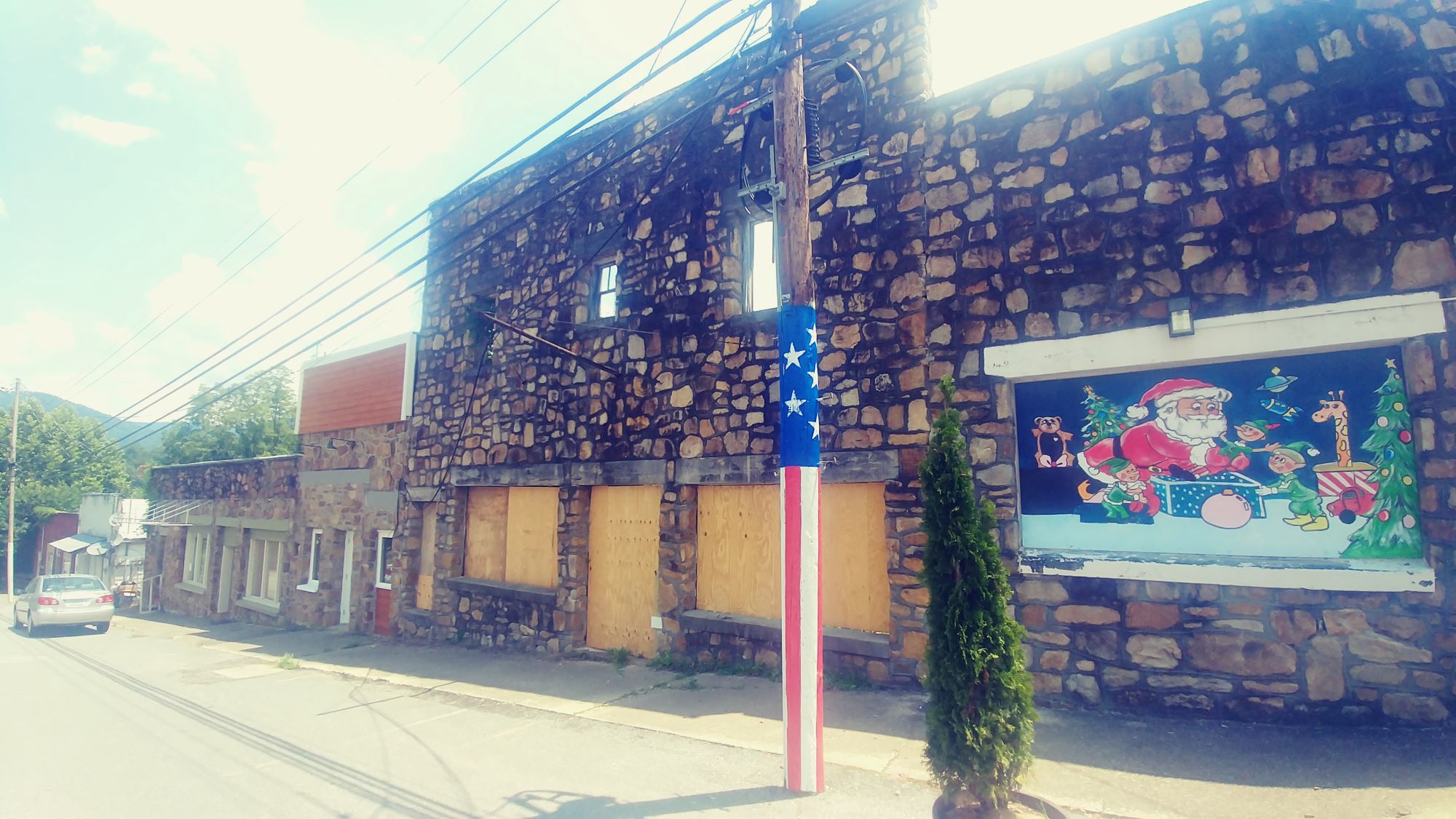Hernando de Soto arrived at the foothills of the Blue Ridge Mountains in what would become North Carolina in 1540, four years after captaining the Pizarro brothers’ destruction of Atahualpa’s Incan Empire. The Spanish conquistador, in his late thirties, was the first European to venture into the American South and see the Appalachian Mountains.
Francisco Pizarro, who led the conquest of the Andean Incan kingdom and became one of its Spanish viceroys, depended on de Soto to lead mounted lancing assaults on the Incan army. But in Peru—in spite of his victory—Pizarro denied de Soto the political leadership he craved, and in 1536 he returned to Europe.
De Soto’s role as a warrior in the conquest of the Incas did earn him wealth—fabulous wealth—and a life of leisure in Europe. But he was dissatisfied. He departed Spain again in 1538 for Florida with an army of 650 men to embark on a doomed four-year expedition marching a circuitous route from Tampa Bay to the Mississippi River. De Soto crossed oceans and invested his wealth, his honor, and ultimately his life pursuing one thing in the New World: power.
His single-minded quest for command in the South was a disaster for the Native American communities and chiefdoms he encountered. De Soto’s army pressed them into service, using them as translators, guides, porters, and concubines. They routinely took food and supplies by force. If the natives resisted, punishment was bloody. It didn’t take long for the expedition to become feared and hated among the chiefdoms of the region. Consequently, when they could, his captives tried to escape.
By May 1540, a year after disembarking in Tampa Bay, the de Soto expedition reached the territory of Chalaque, southwest of what is today Charlotte, North Carolina. The Anglicized version of Chalaque is Cherokee. This was their ancestors’ domain. De Soto’s army moved through Chalaque to the regional chiefdom of Joara in the Appalachian foothills in what is today Burke County, North Carolina.
The mountains were natural obstacles to pursuit and recapture. Consequently, in May, a group of captives, including a native noblewoman and an African captive brought across the Atlantic, escaped de Soto’s army. They fled to Joara, the remains of which can be visited today, at a site near Morganton.
The escape to Joara was perhaps the first recorded instance of fugitives using Appalachia as a hiding place from hostile outside authority. For centuries more, the mountains would serve as a refuge for those fleeing authority—first Native Americans, and then white colonial and American settlers. Almost five hundred years later, the Appalachian distrust of outside authority persists.
“The first person in my family was buried here in 1873, so we were obviously hiding from something,” Graham County real estate appraiser Bryan Farley said. This posture still shapes how Appalachian North Carolina interacts with the federal government. “Most people are Scotch-Irish, very independent,” he added. “I think they like the isolation.”
“The first person in my family was buried here in 1873, so we were obviously hiding from something.”
De Soto’s army was the first foray in what would be centuries of white European and American invaders who assaulted and looted the Native American communities of Appalachia, including the Cherokee. During the late 1830s, under President Martin Van Buren and with the authority of the US Congress’s Indian Removal Act, most Cherokee were exiled to Oklahoma. On the so-called Trail of Tears, about five thousand Cherokee died from disease and starvation during the removal to Indian Territory—what would later be Oklahoma.
But not all of them left. Some stayed on their land; others hid in the mountains. Some even came back from Oklahoma, including Chief Junaluska, head of the Snowbird Clan of the Cherokee, who, years after Removal, walked back to Graham County, North Carolina. For his devotion to the hollows of western North Carolina, he was given land and made a citizen. There’s a memorial to him today in the Graham County seat of Robbinsville. By 1850, one thousand Cherokee reconstituted in western North Carolina and became known as the Eastern Band of Cherokee Indians (EBCI).
Today the EBCI number more than fourteen thousand and are centered in Swain and Jackson counties, close to Graham. In a major reversal from the fate of their ancestors, whom the US Army forced into stockades at bayonet-point as their homes were looted by white settlers, they now own one of the largest economic drivers and employers in the region—Harrah’s Cherokee Casino and Hotel. Many street signs in Graham County are bilingual, written in English and Cherokee.

Photo by Andrew Wainer
The EBCI wields major economic clout, employing more than four thousand workers—the large majority of whom are not Cherokee—in casino operations that drew almost five and half million visitors and generated almost $400 million in gaming revenue during 2018. Much of the surrounding region depends on the EBCI for employment. “We are in a certain position of power because we have so many more resources than everybody else does,” said EBCI economic analyst Jacob Reed. “So a lot of people look to us to lead things. . . . We just have the resources that they don’t.”
Graham County, North Carolina
A small part of EBCI land also lies in Graham County, named after the antebellum North Carolina senator and governor William A. Graham. Graham County is a mountain county, tucked up into the Great Smokies. In 2019, it had 8,441 residents, 87 percent of whom were white and 8 percent of whom were Native American. It is politically conservative and religiously devout. It is the third least populous of North Carolina’s one hundred counties, and its population is decreasing.
It is also poor. According to the Appalachian Regional Commission (ARC), a federal economic development agency led by the governors of thirteen Appalachian states, in 2020 Graham County was the only one of the ARC’s twenty-nine North Carolina counties categorized as “distressed.” The ARC defines distressed counties as being among the worst 10 percent of the counties in the United States in terms of unemployment rates, poverty rates, and per capita income. As of June 2020, Graham County has a 14 percent unemployment rate and 19 percent poverty rate.
While the coronavirus hasn’t helped, the county’s economic challenges go back a long time. County manager Becky Garland said the county suffers from a “culture of poverty [that] has been the case since Graham County was formed in 1872.” This isn’t immediately evident when visiting Graham County. The roads are good, the homes sometimes large and in good condition, and the landscape is beautiful. Sure, you may see a refrigerator in a front yard, but that just puts Graham County on par with much of rural America.
But the county’s socioeconomic challenges run deep, and many of the terms used to describe it are identical to descriptors of chronically blighted American urban settings: “intergenerational poverty,” “hopelessness,” “addiction.”
“I’m really fascinated with how when we focus on poverty, it’s always segregated by the urban black population, or the Midwestern rural farmworker immigrant population, or the Appalachian population, and we don’t talk about poverty like it’s a unified whole,” Graham County economic director Sophia Paulos said. “And it frustrates me because there are so many commonalities” in the experience of poverty.
Paradoxically, one of the challenges facing Graham County is also one of its attractions: It’s in the middle of nowhere. Graham County has a population density of about thirty people per square mile; there are only seven other counties of North Carolina’s one hundred that are less densely populated. “Our remoteness is a double-edged sword,” said Garland. “We have a lot of beautiful natural assets which draw people, but we’ve never been able to really truly find our niche.” Sixth-generation Graham County resident and local pastor and activist Michelle Shiplett said the remoteness profoundly shapes the county’s culture. “We are a very rural, very remote area and the people here are extremely conservative and extremely [committed to] faith-based issues,” she said.
“Our remoteness is a double-edged sword.”
Consequently, while Graham County residents cherish their mountain culture and are intent on preserving it, this commitment comes at a cost. “We’re so remote . . . as far as getting any type of industry or being able to create multiple jobs, it is a very difficult situation,” Shiplett said. “It’s a very different kind of location. Our greatest hope is [bringing in] industry and [supporting] entrepreneurship, which we are working on.”
But local industry has been leaving Graham County for decades. “There’s a passion for manufacturing here and it’s complicated because for a very long time that’s how people got into the middle class,” said Paulos. “People got a really good job at the plant . . . but automation is really having an impact. There’s going to be one job for every five jobs there were ten years ago.”

Photo by Andrew Wainer
The 2014 departure of Stanley Furniture was an icon of the county’s loss of its once mighty timber-related industries. After thirty years as one of Graham County’s largest employers, Stanley’s departure resulted in four hundred fewer jobs for the county. It had been the last of many large manufacturing operations in the county. Stanley Furniture eventually moved some of its operations to Ho Chi Minh City, Vietnam.
The departure of Stanley was the coup de grâce for the county’s economy and it steadily slid into a depression. “Main Street is, for the most part, dead,” said Graham County native Anne Hager, head of the Prosperity Committee, which is seeking to spur economic development in the county. “There are no jobs, a lot of folks are elderly and are living on whatever they can get. Children live in poverty . . . and the median household income has not increased in seven years. The employment and total taxable wages are declining. In other words, the way I look at it, we’re declining.” Shiplett also witnessed the impact of the decline of manufacturing. “It affected a lot of families. And just recently, the next county over, Swain County, where a lot of people went to work, their factories have also closed now.”
Bryan Farley, who grew up shopping in a bustling Robbinsville, also connects the damaged downtown to the decline of industry. “We used to have about six manufacturing companies here: Stanley, you had American Uniform, you had ACI which was electronics, then you had Dell Electronics, then you had Venus Lumber Company,” Farley said. “When I was young you could buy clothes in four of five places and now you don’t buy anything. There’s nothing here. I’m probably the last generation in my bunch that’s gonna stay here. Everybody else moves on.”
“There’s nothing here. I’m probably the last generation in my bunch that’s gonna stay here. Everybody else moves on.”
With the decline of jobs and opportunity come the predictable socioemotional outcomes. “[Graham County workers] don’t have marketable skills to be able to go somewhere else and find [employment],” Shiplett said. “And to think about trying to pull up roots, find a house, pay rent, find day care, all that kind of stuff, the incentive is not there. They can take better care of their family remaining on welfare than they can on minimum wage.”
Residents say opioids are rampant in Graham County. Of course, this is now true for much of Appalachia. The ARC finds that while the overall US non-Appalachian poisoning mortality rate—a proxy for opioid overdose deaths—is 14.4 per 100,000, for North Carolinian Appalachia it’s 21.3 per 100,000. Graham County’s rate is 30 per 100,000. “Those pills are not going to sit in the drawer around here,” Graham County Star newspaper reporter Robbi Pounds said. “Somebody is going to end up taking them.”
The opioid problem has compounded Graham County’s economic challenges. “We have got to return our workforce to being able-bodied and right now overcoming the substance-abuse crisis is the big issue,” said Shiplett. “And having employment for them once they are in recovery so that families are able to be reunited and able to care for themselves is a big issue. We have to have a workforce in order to be able to interest people to come here to offer jobs.” Graham County has successfully applied through the ARC for funding from the Trump administration to help those struggling with addiction get back in the workforce. Graham County’s Recovery-to-Work project includes local and regional partners and includes state, local, and private funding.
Off the Grid
Like much of rural America, Graham County also struggles with internet access, the one technology that connects even the far corners of the earth to the global economy. “Anything west of Asheville . . . it’s the Wild West,” said Pounds. “You cannot make a cell phone call out here. It’s like 1994. I have to drive twenty minutes to get a signal. Everybody has a cell phone, but they are not going to work because you are in these cracks in the mountains.”
Without broadband internet, communities in the hollows of Appalachia are hard-pressed to make globalization work to their advantage. “The broadband situation here is fairly woeful and access is limited to certain pockets of the county,” said Paulos. “At the end of the day, broadband is the new electricity and Appalachia is without it in most places.”
Paulos is seeking funding for broadband infrastructure, but “it’s been incredibly hard until very recently to get support for expanding that,” she said. “There are large efforts on a state scale, but they’re a drop in the bucket compared with what’s needed here.”
“You cannot make a cell phone call out here. It’s like 1994. I have to drive twenty minutes to get a signal. Everybody has a cell phone, but they are not going to work because you are in these cracks in the mountains.”
The Brookings Institution reports that it would cost the federal government $40 billion to bring broadband access to 98 percent of the country and even more reach to the most remote areas. Dale Wiggins, Graham County chair of the board of commissioners, said the county has a fiber-optic infrastructure, but the problem is connecting it to homes and businesses—the so-called last mile. “For places like Graham County, we don’t have enough customers to ever repay the cost of that construction so I think the state and federal government need to look at it much as they did with the electrification and agencies like Tennessee Valley Authority,” Wiggins said. That is, for networking to happen, it will be the government, and not profit-minded corporations, which will have to be the one to get it done.
In addition to the twenty-first-century connectivity challenge of broadband, Graham County also confronts a nineteenth-century connectivity problem—roads big enough for industry and other outsiders interested in doing business here. The roads are good in Graham County, and thousands of tourists, in ever-increasing numbers, had, before the pandemic, begun to visit the region for car and motorcycle tours. But they’re not big enough to support manufacturing. “What little industry you’ve got don’t want to come up a two-lane road, so we’ve been having a four-lane plan for fifty years that’s never made it in here,” said Farley. “So we’re never going to have easy access, and so we’re always going to be isolated.”
John Colwell, the Robbinsville volunteer city manager, is also a Graham County transportation expert—though an amateur expert. “To this day, there are no four-lane roads into this county,” Colwell said. “And there are times here when there are rockslides in terribly wet weather and access in and out of the county gets to be precarious at best.”

Photo by Andrew Wainer
Just as the government isn’t providing timely help alleviating Graham County’s long-standing lack of broadband, for decades it’s also failed to build roads that would make the county more accessible, particularly for commerce. The Corridor K project was born in 1965 under the Appalachian Redevelopment Act as part of President Lyndon Johnson’s War on Poverty. It proposed three thousand miles of new highway to connect Appalachia to the national interstate system to reap the benefits of fast and efficient ground transportation. Much of Appalachia wasn’t integrated into the interstate system due in part to the difficulty of its mountainous terrain.
Now in middle age, Corridor K is 90 percent complete, but the section intended to connect to the county seat of Robbinsville remains unbuilt. “There’s been talk here of extending the four-lane that comes into Graham County through to Robbinsville and back out to Andrews, but it’s been on the drawing board for probably fifty to sixty-five years,” Colwell said. “And there’s been tremendous controversy between state department of transportation and local government. It’s been a real fiasco.”
There are good reasons for some delay in building the road, including environmental concerns and costs, which may include tunneling through mountains. But many residents, including Colwell, said reattracting industry depends on having a strong transportation system. “We’ll never attract a business here again like Stanley Furniture if we can’t get tractor trailers in and out of the county,” he said. “And a lot of that depends on the roads.”
Dry
Graham County residents often place the blame for problems at the doorstep of government, most frequently the federal government. But there’s one major intra-county conflict that exemplifies the fact that, regardless of what happens in the outside world, Graham County is something of a community apart.
“This is the only county in the state of North Carolina that is completely dry,” John Colwell said. Graham County’s almost complete ban on alcohol sales also speaks to its quintessentially American duality. One the one hand, it’s a frontier region that was a stronghold for moonshiners, bootleggers, and brawlers. On the other hand, it’s fertile territory for churches advocating old-time Baptist discipline. “This was an old logging camp. If you know anything about logging, you were Type A, a frontiersman, a man’s man,” said Farley. “So you worked hard—a lot of those guys died young because they worked so hard—but they played hard too.”
Graham County’s rowdy reputation from eighty years ago lives on. “The town had a lot of workers come in [to build] the Fontana Dam [during the early 1940s]. . . . They would play pretty hard and the town got pretty rough,” said Hager, whose Prosperity Committee is lobbying to loosen alcohol sales. “My Mom would not let my older sisters go to town alone for fear of their safety. Law enforcement was ineffective or nonexistent. In 1948 the county decided to end alcohol sales. That was probably a pretty good step. . . . But now, things have changed. . . . Robbinsville is a very safe place to be. I think the folks here still remember those days or their parents talking about those days that were pretty bad.”
The county’s ban on alcohol seventy-two years ago may have been prudent at the time, but with Graham County now looking to tourism to bolster its economic fortunes, many see the liquor ban as a relic and a fetter to revitalization. “There’s a group of us here, we’re committed to the revitalization of Robbinsville,” said Colwell. “We want to see the county improve so we had a spin-off group to broach the legalization of beer and wine sales. . . . [But] there was tremendous opposition from the religious community when we tried to get this put on the ballot.”
The Prosperity Committee’s multiple attempts to put legalization on the ballot were stymied by the five county commissioners, supported by opposition from faith leaders led by Reverend Daniel Stewart, pastor of Cedar Cliff Baptist Church. “[They said that the commissioners had better keep] the county dry or they would make sure that they weren’t reelected,” Hager said.

Photo by Andrew Wainer
Stewart makes no apologies for his stance and says there’s no evidence that allowing alcohol in Graham County would boost the economy. “There are a lot of small towns around us that got [a license to sell alcohol] and it’s not improved their economy as far as I can tell,” Stewart said. Like many in Graham County, Stewart hinted at personal experience of the dangers of alcohol. “It’s bad stuff, it’s a drug,” he said. “I haven’t seen anything good come out of it but trouble.”
Wiggins says he’s “neutral” on the issue of alcohol in Graham County. While he said it’s probably true that increased alcohol sales would increase business and revenue for the county, it also risks the region becoming—in his view—an Appalachian Las Vegas. “It depends really and truly what you want your community to be like,” Wiggins said. Hager cites research that when a county goes from dry to wet, opioid use goes down. Pastors’ response to this argument, according to Hager? “If you have a rattlesnake problem, why would you bring in some copperheads?”
For the average American in 2020 the idea of “a dry county” sounds like an absurd, almost humorous idea straight out of Footloose. But Becky Garland, who has deep roots in the county and has to mediate between its multiple interests, said she understands both sides of the issue. “When you have a culture of poverty and a culture of scarcity . . . there’s a mindset that if you get anything you better use it up as quick as you can because there may never be any more,” Garland said.
Like Reverend Stewart, Wiggins, and many others in Graham County, Garland knows of alcoholism from lived experience. “My daddy grew up very, very poor. They lived hand-to-mouth, I’ll just call it that,” Garland said. “He grew up in a very alcoholic atmosphere where people would binge drink, my grandfather would binge drink. They would get a pint or a quart jar of moonshine and they weren’t happy until they saw the bottom of a bottle. Not in a day, not in a week—in about an hour and a half. So that culture of scarcity has bred this love-hate relationship with alcohol for the people in this county.”
“They would get a pint or a quart jar of moonshine and they weren’t happy until they saw the bottom of a bottle.”
Garland said the county’s five-member board of commissioners shares this firsthand experience with the terrors of alcoholism. “I can understand why my board is so reticent about bringing it to a vote. Out of my five board members, probably four out of five have lived the consequences either personally or via family of seeing the results and not knowing how to stop,” Garland said. “There’s that fear that overrides the economic impact.”
That’s the conundrum Graham County faces on alcohol: “There’s a group coming in that are not from here—they know how to sit down and drink a glass of wine for dinner and that’s it,” Garland said. “And that’s the group that’s pushing for alcohol. But they don’t get that the people who grew up with scarcity cannot just stop with one glass of wine. . . . And that’s why there’s such a push-pull between the people who have deep roots here and those who don’t.”
Tail of the Dragon
Much of the debate of alcohol sales pivots on Graham County’s potential as an Appalachian tourist mecca. Thousands visit the beautiful lakes, creeks, and mountains every year.
While many in Graham County want to bring manufacturing back, others say that’s a fantasy. “Realistically, industry is just not going to come into these small areas,” Farley said. “I’ve always told everybody when they got mad when NAFTA happened and it sucked all the jobs to Mexico or wherever, if you go back forty years before that, we sucked all that industry from up North. Manufacturing tends to follow cheap labor.”
This is why the alcohol debate is so heated; advocates say its local availability is directly related to Graham County’s best hope for economic revitalization. “We have the most beautiful place,” Farley said. “We should be capitalizing on that. We need to bring back the tourism industry.” The county government also wants to go in this direction, according to Garland. “We’re still hopeful that tourism could be our niche,” she said.

Photo by Andrew Wainer
Colwell also sees tourism as a natural economic niche for a place as beautiful as Graham County. “The only plus side to the county is that we have over 400,000 visitors a year,” he said. “In the summertime, the roads in this area are just absolutely gorgeous. . . . There’s one road where there are 328 curves in 11 miles and they call that the Tail of the Dragon, and people come from all over the world to drive that road, motorcycles and sports cars.”
But he said the ban on alcohol, among other issues, limits the county’s tourism potential. “The average time people visit here is about two days. People who are on vacation, they want to have a good meal, they want to have a drink or whatever, and it can’t be done here,” Colwell said. “It’s quite common for people to come into town and ask where they can buy spirits, and [when they find out it’s a dry county] they turn around and leave, and that’s a big problem.”
In spite of the challenges, Paulos sees opportunity for Graham County to bring back some manufacturing through tourism. “The outdoor recreation industry is growing really quickly here and part of that is manufacturing,” Paulos said. “So a lot of really well-known outdoor companies have their headquarters here; there are over forty of them in western North Carolina.”





